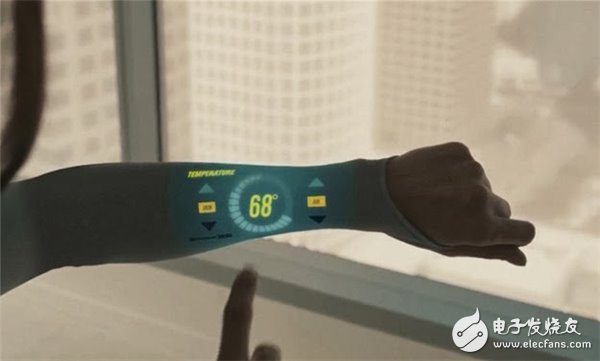Let's take the Internet of Things in everyday life as an example. Imagine that on your way home from work, your physical and psychological parameters are usually steady every day. If you suddenly see a rapid pulse, it may be because you are Running or being nervous may also be someone tracking you. What if you have a smart wearable device that can monitor all parameters? It will find anomalies and then trigger an alarm or notify other devices around.

In the past year, we have realized that in order to bring a large number of sensor devices online, functionally, artificial intelligence is a must. Moreover, in order to be able to analyze and interpret the data obtained from various devices, the importance of artificial intelligence in the revolution of the Internet of Things has become more prominent. Quantitative self and IoT revolution The term "quantitative self" helps us to understand the combination of the Internet of Things and artificial intelligence. In short, quantifying self is self-awareness through self-tracking techniques. Some problems have been bothering us: How are we going? What changes can we make? Where should we save time? We collect and analyze all aspects of daily life, such as our food consumption or the quality of air around us; we analyze the different states of emotions, and we often worry about our own conditions, whether mentally or physically. When the IoT system can trigger an action, the data is most valuable to us, which means that we should collect and analyze the data in real time to maintain the continuity of the information. In general, this is one of the important steps leading to the emergence of the Internet of Things revolution. The IoT needs artificial intelligence to predict that by 2020, each of us will have a lot of networking equipment, and we need to process terabytes of data per second. This does not include those pet-related networking devices. To a certain extent, things Networking will become the largest source of data on the planet. The Internet of Things revolution allows devices to indicate where real business opportunities lie. We have witnessed how information technology is driving the transformation of traditional systems into highly intelligent applications and services. In order to immediately identify the known mode or the new mode, it is necessary to perform data collection in real time. However, the search for data and information generated by all these devices to perform this operation is still a big problem. At present, artificial intelligence can be used to help solve some tasks still performed by manpower. Once the computer can completely simulate the human brain, it will trigger an “intellectual explosionâ€, which will completely change civilization and the rate of innovation will increase exponentially. Artificial intelligence will certainly surpass self-driving cars and airplanes. If every device in the world is self-learning and connected to a globally connected computing environment, how does the world work? Artificial intelligence is part of the revolution in the Internet of Things. Every big company collects and maintains a large amount of customer-related personal data, including their preferences, buying habits, and other personal information. The Internet of Things is generating a lot of data, and many organizations are trying to interpret these large amounts of data. It is almost impossible to rely on manpower to process this data. As we all know, the core of the Internet of Things is the data flow between devices. In order to be able to find information useful to us in the vast ocean of this data, you need artificial intelligence. A few years later, artificial intelligence will become an important part of any Internet of Things system and will revolutionize the Internet of Things to a new level.
Description of Antenk's Slim D-Sub Connector
D-Sub Connector Slim is a space-saving D-sub Socket Connector with an 8.54mm depth. The slim 8.54mm depth reduces the board mounting area by 33% as compared with standard models. The Slim Profile D-Sub Connectoroffering includes D-sub sockets with nine right-angle DIP terminals and a mounting board thickness of either 1.6 mm or 1.0 mm (from difference in lock pin structure). RoHS compliant, Slim D-Sub Connector offers a 3A rated current, 300VAC rated voltage, and an insertion durability of 100 times within an operating temperature range of -25º to 105ºC.
Features of Antenk's Slim D-Sub Connector
Board mounting area is reduced by 33% (compared with standard models) using a depth of 8.4mm
D-sub sockets with nine right-angle DIP terminals
Mounting board thickness of either 1.6mm or 1.0mm (from difference in lock pin structure)
RoHS Compliant
Applications of Antenk's Slim D-Sub Connector
Factory Automation
Machine Tools
Power SuppliesMedical Tools
Test & Measurement
LSI/FPD Manufacturing Systems
Information Transmission Tools
Security Tools
Industrial Tools
Slim D SUB Connector,High Density D-Sub Connector Slim, Solder type D-Sub Connector Slim,Right Angle D SUB Connector Slim, slim profile 90°- SMT D SUB Connector,9 15 25pin slim profile 90°- THT D SUB Connector
ShenZhen Antenk Electronics Co,Ltd , https://www.antenksocket.com